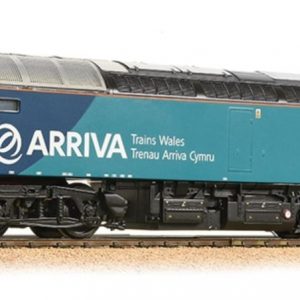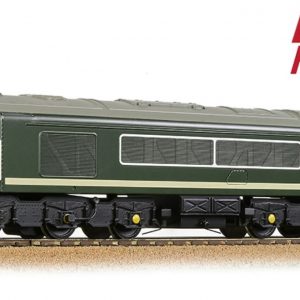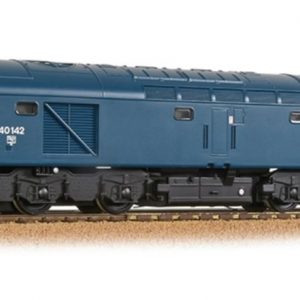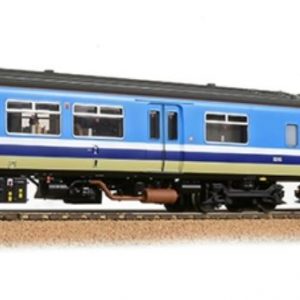Description
This model of the Class 101 two-car Diesel Multiple Unit (DMU) captures the character of these first generation DMUs to a tee. Featuring detailed bodywork and interiors, the bogies have been finely rendered and all of the chassis-mounted equipment is present and correct too. All of these details are highlighted by the exquisite livery application, using BR-specification colours and authentic numbers and logos to produce a multiple unit fit for any British Rail fleet.
MODEL FEATURES:
- Bachmann Branchline OO Scale
- Era 5
- Pristine BR Green (Roundel) Livery
- 2-Car Unit comprising DMBS No. SC51231 and DTCL No. SC56389
- Headcode B and Destination Blinds for Perth and Dundee Tay Bridge
- Accessory Pack
- NEM Coupling Pockets
- Powerful 5 Pole Motor with Flywheel
- Sprung Buffers
- Directional Lighting and Illuminated Destination Blinds
- Interior Lighting
- Ready to Accept a Speaker
- SOUND FITTED – Fitted with a ESU Loksound V5DDC Sound Decoder – See below for the function list
- Length 268mm
SOUNDS:
F1 – Sound On / Sound Off
F2 – Brake (Non-Latching)
F3 – Cylinder Drain Cocks
F4 – Whistle (Playable)
F5 – Normal Load / Heavy Load
F6 – On – Firebox Door Opening / Off – Firebox Door Closing
F7 – Injectors
F8 – Fixed Length Whistle
F9 – Flange Squeal (Speed Related)
F10 – Shovelling Coal (F6 must be On to activate this function)
F11 – Blower
F12 – Hand Brake (locomotive will not move with the Hand Brake applied)
F13 – Water Tank Filling
F14 – Coupling/un-Coupling Clank
F15 – Safety Valve
F16 – Guard’s Whistle & Driver’s Response Toot
F17 – Coasting
F18 – Sound Fades Out / Sound Fades In
F19 – Shunt Mode (Reduces Speed)
F20 – Acceleration/Deceleration inertia off
F21 – Volume Control (LATCH = Volume On/Off) or (TRIGGER = cycles 6 Volume Levels)
F22 – Rail Join Clatter
F23 – AWS
Analogue Users: Normal-load running sounds, acceleration sounds and any other automatic and randomised sounds can be enjoyed when using this model on analogue control (DC) straight from the box – these sounds will play automatically when power is applied!
CLASS 101 DMU HISTORY
The Class 101 Diesel Multiple Unit (DMU) was one of the most numerous and widely used types of all the first generation DMUs. Typically formed into two-, three- or four-car sets, the first examples were introduced in 1956 and more than 600 vehicles, including driving vehicles fitted with a cab at one end and corridor gangway at the other, and intermediate cars with corridor gangways at both ends, were built by Metropolitan Cammell at Washwood Heath in Birmingham. Construction continued until 1959.
Initially allocated to the North Eastern, London Midland and Scottish Regions, the units later saw use on the Eastern and Western Regions, with occasional running into Southern Region territory too. Fitted with the Blue Square control system, the Class 101s could work in multiple with other 101s and numerous other DMUs when additional capacity was required.
During the 1970s BR embarked on a refurbishment programme to provide passengers with an improved travelling environment and the Class 101s were used as a testbed for these works which resulted in the majority of Class 101 vehicles being refurbished over a period of almost ten years.
In later years many sets were given an additional makeover to extend their passenger service life, whilst others found new roles carrying parcels, as route learning units and for sandite operations. Around thirty two-car units were still in traffic at the start of the 21st century making the Class 101 one of the final first generation DMUs to remain in revenue-earning service.
The type remains popular today, with more than forty vehicles being preserved and these can now be found operating on preserved railways around the UK.





